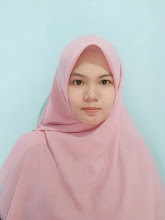Laurie Thain – Canada
Age: 6-10
Time: 20 minutes
Large classes: No
Mixed level: Yes
Materials: Flashcards.
Organization : Whole class activity.
Aim: To learn new vocabulary.
Description: In this game the class have to guess what is on a card chosen by one of the children.
Preparation: You will need to make flashcards of the new vocabulary items (we use furniture here). There should be one card for each child in the class.
Procedures
- Ask the children to sit in a circle. Teach the children the words on the flashcards. There are lots of ways you can do this. We suggest the following: show each card and say the word. Children repeat. Show the cards again in a different order and ask the children to say the correct word. Help them if necessary. Then give each child a card. The children show the cards one-by-one and the class says the word. The children can then put cards face down in front of them and the teacher asks, ‘What card does Mary have/has Mary got?’ and the children have to remember. If they are right, the card is turned face up.
- When all the cards have been learnt, you can play the game. Choose one leader and one helper. The helper gathers all the cards and the leader chooses one which they put face down on the floor. The helper holds the remaining flashcards. The children take turns asking the leader questions. For example, if the vocabulary set is domestic animals, the children might ask, ‘Do you have the chair?’ The leader answers, ‘Yes I do’ or ‘No I don’t’. If ‘Yes’, the lucky guesser becomes the leader and chooses a new card to turn face down and there is a new helper assigned. If ‘No’, the helper turns up the ‘cat’ so all can see it. Then children take it in turns to ask a question until someone guesses correctly and becomes the leader
Notes
You can play lots of rounds of this game or just a few – it
is up to you! It is also a really useful activity for revising vocabulary
previously taught.
Alternatives
- The teacher can be the leader. If a child guesses the card correctly, they keep it. At the end of the game, when all the cards have been collected, the children take it in turns to say what they have, for example, ‘I have a chair, a table and a cupboard’.
- Hatice Elif Kalaycioglu (Turkey) suggests the following alternative: instead of sitting in a circle, the children stand in a circle. The teacher plays some music and the children walk round the cards. When the music stops, the teacher calls out the item of vocabulary. The children have to point to the correct picture card. If you want to make this into a competition, the last child to point and any children who points to the wrong card can be ‘out’, until only one child remains. She also suggests putting the pictures on the board. The children can be divided into two teams, A and B. The teacher calls out one item of vocabulary and the first member of the team has to go to the board and either take the correct picture or point at it. The first child to do so wins the point.
- The same activities can be used to practise sound/spelling associations. Instead of pictures, write the words on the cards, or use a mixture of picture and word cards. The children have to collect both the correct picture and word cards.
- Ask the children to cut pictures out of magazines, newspapers etc and stick them on card (laminate them if you can). Over time, you can build up a class collection of picture cards that can be used for a number of different activities.
No Resources
Flashcards do not have to be of
professional quality. Basic drawings on scrap paper are fine.
Reference
Crazy Animals and Other Activities for Teaching English to Young Learners PDF



0 comments:
Post a Comment